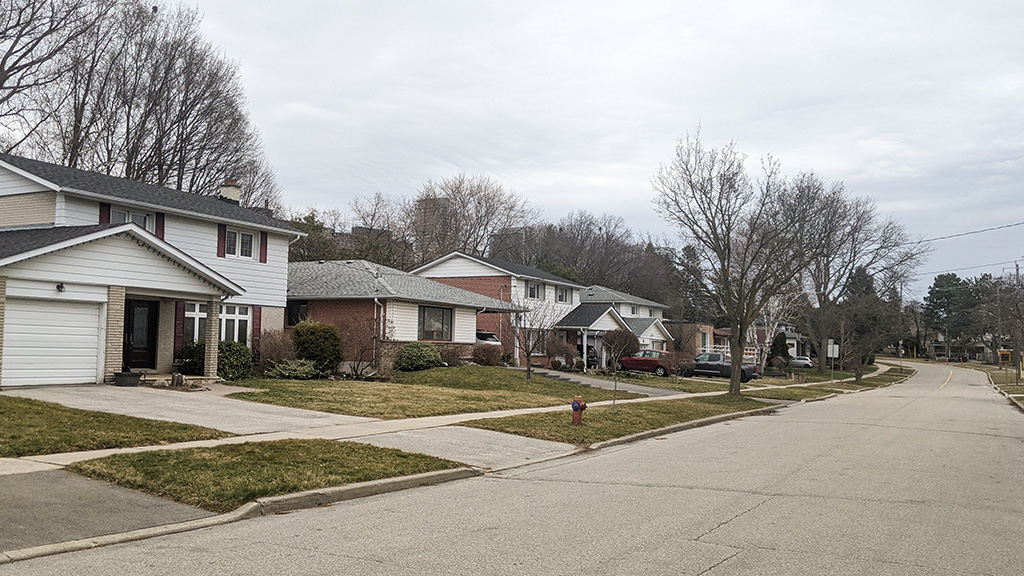A Toronto-focused program that offers a systematic approach to creating infill housing while broadening the base of potential participants has won the top prize in the sixth annual Housing Research Awards handed out by the Canada Mortgage and Housing Corporation.
The project, billed as ReHousing the Yellowbelt, offers citizen homeowners a kit with planning, zoning and redevelopment tools to help them embark on the initial stages of transforming single-family homes into multi-unit housing, compare from among multiple options and initiate design, financing and building strategies.
Partners in the program include the University of Toronto’s Master of Urban Design program, Tuf Lab and LGA Architectural Partners, operating as the ReHousing team.
On Feb. 29 the team was announced as winner of the $25,000 CMHC President’s Medal for Outstanding Housing Research, recognizing a “significant research contribution that helps us achieve our aspiration to make housing affordable for everyone in Canada.”
U of T assistant professor Michael Piper, director of the Master of Urban Design program, explained that typically when a homeowner wants to explore infill housing on a property, it’s a one-off project with outreach required to planners, architects, builders, even suppliers of building materials.
“What we wanted to do is start to systematize things like getting pricing, systematize the process of understanding the zoning, and this idea of a design catalog that we came up with that now the housing ministers have, it’s trying to create a system to make it more cost effective, to create economies, to create cost savings for small construction projects,” said Piper.
City comes calling
The strategy was developed in part at the request of the City of Toronto’s planning department, which instituted zoning reforms in May 2023.
The changes permit the development of multiplexes — low-rise buildings with two to five units in a single structure — in all residential neighbourhoods. Piper said he has been working on a plan since 2020.
He explained governments and the construction industry “do a really good job of making large development less expensive,” and lenders are equipped to offer access to loans. But for infill, there is not a recognized pathway for accessing the professionals who can advise on individual projects.

U of T researchers identified post-war housing typologies across the city, leading to the launch of ReHousing.ca, a website targeting non-professionals offering free multiplex designs and explanatory diagrams and text.
“We really believe it’s not going to be small developers that are going to create the most change in single-family neighbourhoods,” said Piper. “It’s going to be homeowners and prospective homeowners who are going to be creating the extra unit.”
Nonprofits and startups are also being targeted as new sources of infill development.
Piper recently learned the program will receive new funding to develop the platform for other cities, and also to make it more customizable for users. In future users will be able to type their address in and a report will be generated tailored to their home or the home they may want to buy. A pricing tool will also be developed.
The news of the funding was so fresh that Piper was not yet able to announce broader details.
“The idea is, you can take this and you can approach architects, you can go to lenders about getting a loan. You can go to the city and say, ‘this is a report I have.’”
Piper said there is reason for optimism about the prospects for uptake given the success of the approach in California 20 years ago. There, it took a decade for the program to gain momentum. The Toronto proponents are learning from the California experience.
Two B.C. winners earn $12,500
The other two winners of CMHC awards were:
- Gold Roof Award for Housing Research Excellence ($12,500) — University of British Columbia for its Housing Assessment Resource Tools Project, a housing needs assessment tool, a land assessment tool and a property acquisitions tool.
- Gold Roof Award for Knowledge to Action ($12,500) — BC Society of Transition Houses, based in Vancouver, for its project on the Practical Applications of a Women-Centred Approach to Housing Design.
Follow the author on X/Twitter @DonWall_DCN.






Recent Comments